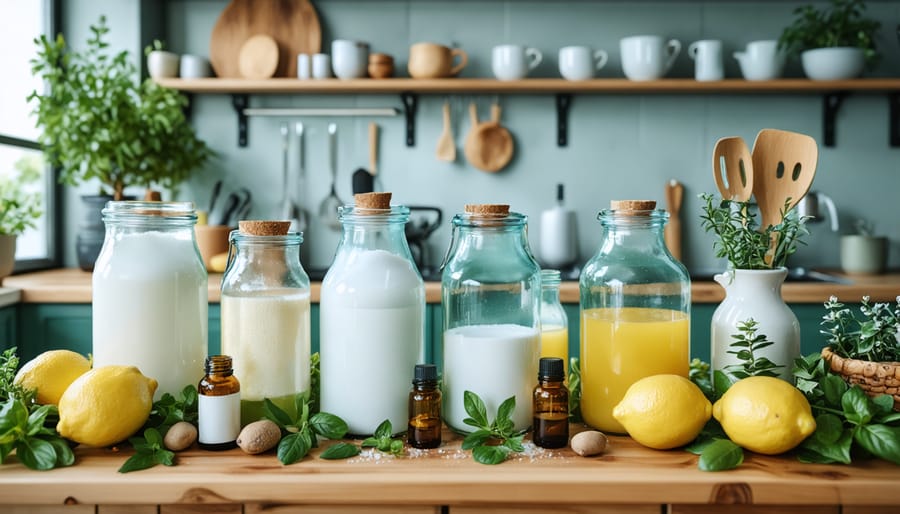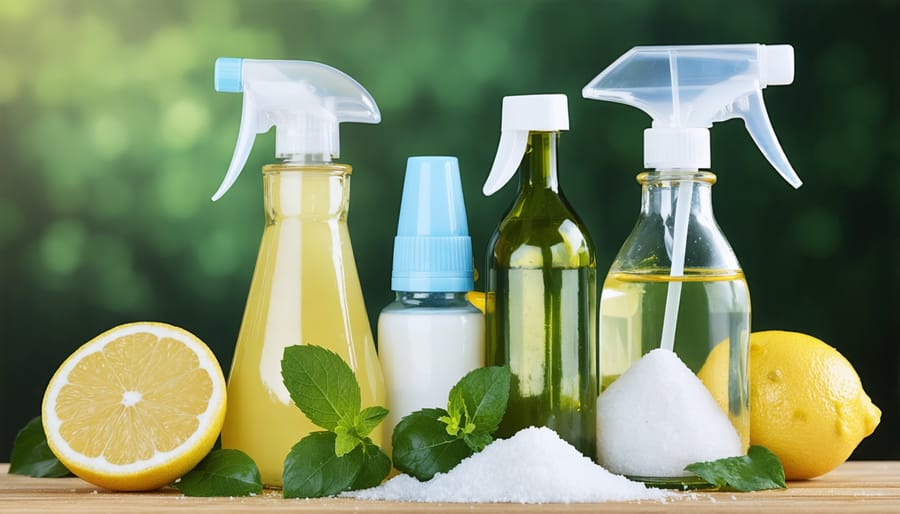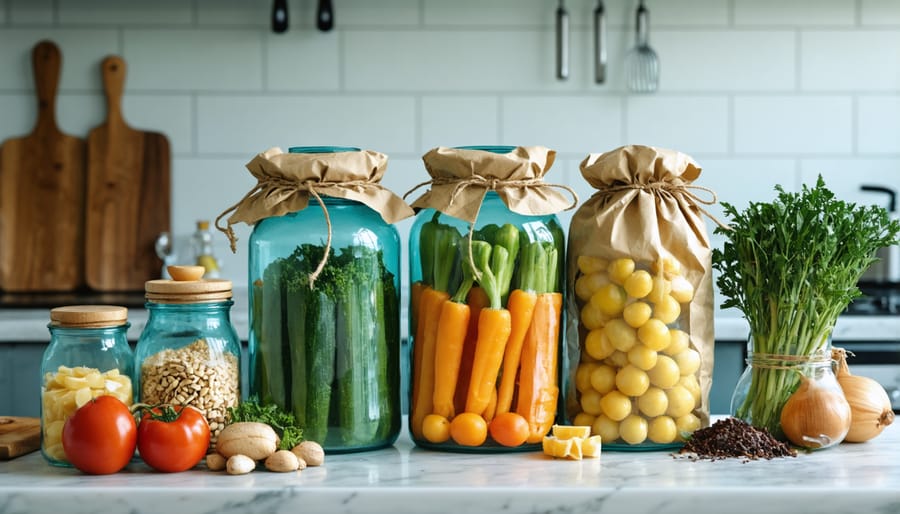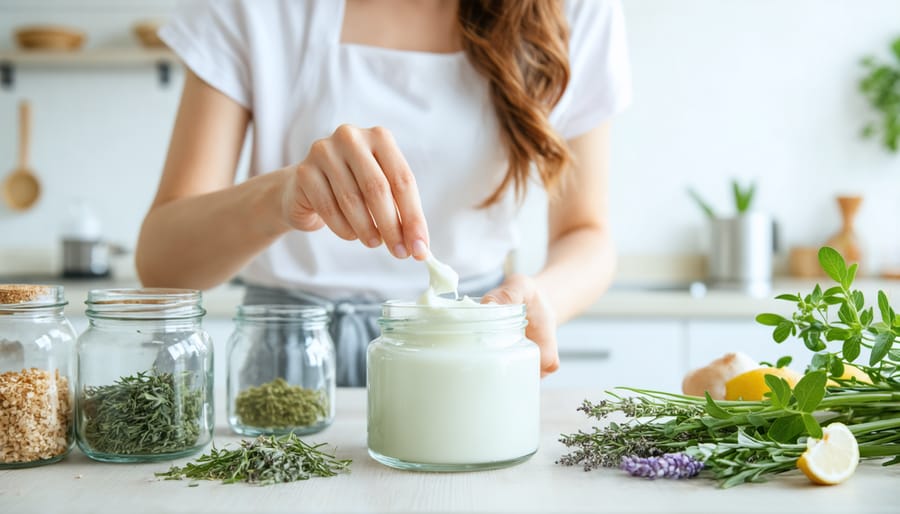
Transform your home into a natural haven by replacing chemical cleaners with simple vinegar, baking soda, and essential oil solutions. Cultivate a chemical-free environment where children can thrive through eco-friendly parenting practices that nurture both your family and the planet.
Natural family living isn’t just a lifestyle choice—it’s a powerful way to protect your loved ones while teaching the next generation about environmental stewardship. By making mindful choices about the products we bring into our homes, the food we serve at our tables, and the daily habits we cultivate, we create a foundation for healthier, more sustainable living that ripples through generations.
Whether you’re just beginning to explore natural alternatives or deepening your commitment to conscious family living, small changes create meaningful impact. From choosing organic produce and natural fiber clothing to establishing screen-free family time and connecting with nature, each step builds a more harmonious home environment where wellness and environmental responsibility naturally intertwine.
Let’s explore practical ways to embrace natural family living while honoring your unique family’s needs and values.
Creating a Non-Toxic Home Environment
Natural Cleaning Solutions That Actually Work
When I first switched to natural cleaning solutions, I was skeptical about their effectiveness. Now, I can’t imagine going back to conventional cleaners! The secret lies in understanding which natural ingredients actually pack a punch against dirt and grime.
Vinegar and baking soda are the dynamic duo of natural cleaning. Mix equal parts white vinegar and water in a spray bottle for an all-purpose cleaner that tackles everything from countertops to windows. For stubborn bathroom stains, sprinkle baking soda directly on the surface, spray with vinegar, and watch the fizzing action work its magic.
Essential oils aren’t just for aromatherapy – they’re powerful cleaning allies too. Tea tree oil is naturally antimicrobial, while lemon oil cuts through grease beautifully. Add 10-15 drops to your vinegar solution for extra cleaning power and a fresh scent.
For wooden surfaces, combine 1/4 cup olive oil with 1/4 cup white vinegar for a natural polish that nourishes while it cleans. My favorite kitchen degreaser is a simple paste of baking soda and castile soap – it works wonders on stovetops and range hoods.
Remember to label your homemade cleaners and keep them out of reach of children. While these solutions are natural, they should still be handled with care. Start with these basics, and you’ll be amazed at how effective (and affordable) natural cleaning can be!

Smart Air Quality Improvements
Creating a healthier indoor environment doesn’t require complex solutions or expensive equipment. In fact, some of the most effective air-purifying methods are surprisingly simple and natural. I discovered this firsthand when my youngest developed seasonal allergies, prompting our family to explore natural alternatives to artificial air fresheners.
Plants are nature’s air purifiers, and adding them strategically around your home can make a significant difference. Spider plants, peace lilies, and snake plants are particularly effective at removing common indoor pollutants. We keep these low-maintenance green friends in bedrooms and living spaces where we spend the most time.
Opening windows for just 15 minutes each morning creates a refreshing cross-breeze that exchanges stale indoor air with fresh outdoor air. This simple habit has become part of our morning routine, along with diffusing essential oils like tea tree, eucalyptus, or lavender for their natural purifying properties.
Beeswax candles are another fantastic natural air purifier. Unlike paraffin candles, they release negative ions that help remove dust, dander, and other pollutants from the air. We light them during dinner time, creating both a cozy atmosphere and cleaner air.
Regular cleaning with natural solutions like vinegar and baking soda helps prevent the buildup of dust and allergens. Adding activated charcoal bags in closets and lesser-used spaces naturally absorbs odors and excess moisture, keeping your home’s air fresh without artificial fresheners.
Sustainable Kitchen Practices

Zero-Waste Food Storage
As a mom of three, I’ve discovered that transitioning to zero-waste food storage isn’t just about being eco-friendly – it’s about creating a more organized and beautiful kitchen space. Let’s explore some practical ways to reduce kitchen waste while keeping our food fresh and accessible.
Glass jars have become my best friends in the kitchen. From storing dry goods like pasta and rice to keeping leftover soups fresh in the fridge, these versatile containers are both practical and beautiful. I love how they let me see exactly what I have at a glance, which helps reduce food waste and makes meal planning easier.
Beeswax wraps are another game-changer for sustainable food storage. These reusable alternatives to plastic wrap work wonderfully for covering bowls, wrapping cheese, or keeping bread fresh. They’re naturally antimicrobial and can be refreshed with gentle washing and proper care.
For produce storage, cloth bags and breathable containers have revolutionized how long our fruits and vegetables stay fresh. Cotton mesh bags are perfect for shopping and storing items like onions and potatoes, while specialized produce containers with ventilation help extend the life of leafy greens.
Stainless steel containers are ideal for lunch boxes and picnics. They’re lightweight, durable, and won’t leach chemicals into food. I especially appreciate their versatility – from storing sandwiches to carrying snacks, they’re practically indestructible.
Remember to start small and gradually build your zero-waste storage collection. Begin by replacing items as they wear out rather than buying everything at once. This approach makes the transition more manageable and budget-friendly while helping our planet one container at a time.
Seasonal Meal Planning
Creating seasonal meal plans isn’t just about following food trends – it’s a beautiful way to make sustainability a family priority while enjoying nature’s bounty at its peak. When we align our meals with the seasons, we’re not only supporting local farmers but also treating our families to the freshest, most nutritious ingredients available.
Start by familiarizing yourself with your local growing seasons. Visit farmers’ markets or join a CSA (Community Supported Agriculture) program to discover what’s available in your area throughout the year. Spring might bring tender asparagus and sweet peas, while summer offers an abundance of tomatoes and zucchini. Fall harvests gift us with hearty squashes and root vegetables, and winter provides sturdy greens and stored produce.
Create a flexible weekly meal template that can adapt to seasonal availability. For instance, designate “Soup Sunday” using whatever vegetables are in season, or “Market Monday” featuring the weekend’s farmers’ market finds. Keep a running list of family-favorite recipes that can be modified based on seasonal ingredients.
Planning tip: Build your meals around a seasonal vegetable star, then add complementary proteins and grains. This approach naturally leads to more plant-forward meals while maintaining flexibility for different dietary preferences. Consider batch cooking and preserving when ingredients are at their peak – whether it’s making pesto with summer basil or freezing autumn apple slices for winter treats.
Remember to involve your children in the planning process. Let them help choose produce at markets and participate in meal prep. This hands-on experience cultivates an appreciation for seasonal eating and creates lasting family memories around food.
Natural Beauty and Personal Care

Family-Safe Natural Beauty Products
When it comes to beauty products, what we put on our bodies is just as important as what we put in them. As a mom who’s experimented with countless natural alternatives, I’ve discovered some wonderful family-safe options that work for everyone from babies to grandparents.
Let’s start with some simple DIY recipes. A gentle body butter can be made by whipping equal parts shea butter and coconut oil with a few drops of lavender essential oil. For a natural facial cleanser, mix honey with ground oatmeal to create a soothing scrub that’s perfect for sensitive skin.
When you’re short on time for DIY, there are excellent ready-made natural products available. Look for items containing ingredients you can actually pronounce, like aloe vera, chamomile, and calendula. Some trusted brands include Earth Mama (great for babies and pregnant moms), Badger (perfect for the whole family), and Green Goo (excellent for first aid and skin care).
Key ingredients to seek out in natural beauty products:
– Coconut oil for moisturizing
– Shea butter for protection
– Zinc oxide for natural sun protection
– Aloe vera for soothing
– Witch hazel for toning
Remember to patch test any new product, even natural ones, as sensitivities can vary from person to person. Store homemade products in glass containers and keep them in a cool, dark place to maintain freshness. With these simple swaps, you can create a safer beauty routine for the whole family while avoiding harsh chemicals and synthetic fragrances.
Simplified Self-Care Routines
Embracing natural self-care doesn’t mean spending hours on complicated routines or buying expensive products. As a busy mom who’s simplified her own routine, I’ve discovered that less truly can be more. The key is establishing mindful family routines that prioritize both wellness and sustainability.
Start your morning with oil pulling using organic coconut oil while you prepare breakfast – it’s a simple way to maintain oral health naturally. Replace chemical-laden deodorants with a quick DIY spray made from witch hazel and essential oils. For skincare, consider the oil cleansing method using jojoba or almond oil, which actually helps balance your skin’s natural oils rather than stripping them away.
Keep a mason jar of diluted apple cider vinegar in your shower for a natural hair rinse that adds shine and removes buildup. For body care, dry brushing before showering takes just two minutes and helps with circulation and lymphatic drainage. Make your own body butter using shea butter and essential oils – it’s cost-effective and you’ll know exactly what’s going on your skin.
Remember, transitioning to natural self-care is a journey, not a race. Start with one change at a time, observe how your body responds, and adjust accordingly. The goal isn’t perfection but creating sustainable habits that work for you and your family while reducing your environmental impact.
Making the Transition
Embarking on a transition to natural parenting and lifestyle doesn’t have to feel like scaling Mount Everest. Think of it as a gentle journey rather than a dramatic overhaul. Start with what I like to call the “one thing” approach – choose a single aspect of your life to transform each month.
For instance, begin with your morning routine. Maybe switch to natural toothpaste or replace your conventional breakfast cereals with wholesome alternatives. Once that feels comfortable, move on to another area. This gradual approach helps prevent overwhelm and makes the changes more likely to stick.
Create a priority list based on what matters most to your family. Are you concerned about chemicals in cleaning products? Start there. Worried about processed foods? Focus on meal planning with whole ingredients. Remember, what works for one family might not work for another, and that’s perfectly okay.
Keep a journal of your progress, noting both successes and challenges. When I first started, I documented how my children responded to different natural alternatives, which helped me fine-tune our approach. This record-keeping can be incredibly motivating when you look back and see how far you’ve come.
Build a support network, whether it’s joining local natural parenting groups or connecting with like-minded families online. Having others to share experiences with makes the journey more enjoyable and provides valuable resources and tips.
Don’t feel pressured to make everything perfect. Some days you’ll use disposable diapers instead of cloth, or grab takeout instead of cooking from scratch – and that’s completely fine. The goal isn’t perfection but progress toward a more natural, sustainable lifestyle that works for your unique family situation.
Remember to celebrate small victories and be patient with yourself. Every positive change, no matter how small, is a step in the right direction toward a more natural, harmonious family life.
Embarking on a natural family living journey is both exciting and deeply rewarding. As we’ve explored throughout this article, making mindful choices for your family’s wellbeing doesn’t require a complete lifestyle overhaul overnight. Instead, it’s about taking small, intentional steps that align with your family’s values and needs.
Remember that every family’s path to natural living looks different, and that’s perfectly okay. Whether you’re starting with creating your own cleaning products, establishing a small herb garden, or simply being more mindful about the products you bring into your home, each step makes a meaningful difference.
I’ve witnessed countless families transform their lives through these practices, creating healthier, more connected, and more sustainable households. The joy of watching children learn about nature through gardening, the satisfaction of preparing wholesome meals together, and the peace of mind that comes from knowing you’re making conscious choices for your family’s health – these are the true rewards of natural family living.
Start where you are, with what you have. Choose one area that resonates most with you and begin there. As you grow more comfortable, gradually incorporate other natural living practices into your daily routine. Remember, this is a journey, not a race, and every small change contributes to a larger positive impact for both your family and the planet.
Join our community of like-minded families, share your experiences, and celebrate your progress along the way. Your natural living journey begins now, and we’re here to support you every step of the way.



